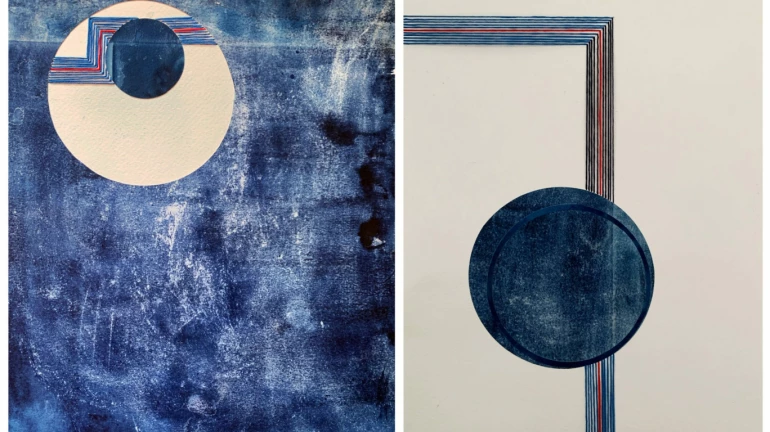
Amidst the pandemic, the team of Mumbai Live got in touch with Dr Gunjan Shrivastava, who speaks about art, and the infusion of culture in a globally interconnected world.
The answers can be attributed to Dr Gunjan Shrivastava, A Professional Artist, Educator, Art Critic and Co-founder of You Lead India Foundation.
I was born to a mother who was an artist of artists who influenced me with her creativity; hence an inclination towards art was innate. I enjoyed drawing and painting as they came naturally to me. The intuition was strong enough for me to take it up professionally. Something that started as a passion in an instant became a sincere exploration during my postgraduate program in Fine Arts. To build onto my skills, I went on to do my PhD in Visual Arts. Since then, I have been associated with art and artistic space in different capacities, which necessitates me to explore my instincts for the craft, as an artist, as a critic, and as an educator and mentor to budding contemporary artists. My nearly two-decade-long journey as a contemporary artist has been a satisfying one so far.
The inspiration lies in the process, it is scientific yet unpredictable which adds to the excitement. I am visceral, as any other good artist would be, I explore and experiment with all that I strongly feel and experience. The only constant in my work is changing, without losing the essence. Cyanotype is a camera-less photographic technique, which gained momentum in the mid-nineteenth century. Through this age-old printing process, I try to capture dried and worn-out leaves in their distinctive quintessence. I keep experimenting with techniques and mediums but over the years I found cyanotypes easy yet ethereal. The embroidery done on paper is unique and special to me. The red threads used on my paintings signify life and run as veins on the worn-out leaves. I like playing with organic elements and nature; it inspires my body of work as is.
Definitely. Art reflects one’s state of mind; a canvas acts as a medium to hold your thoughts. The pandemic made us sit, observe and resurrect. People took up art as a way to express their deepest emotions which sadly became hard for many due to social distancing and periodical lockdowns. Virtual galleries and exhibitions brought world art at your fingertip, paving the way for a friendlier and more open art-viewing experience. Artistic trends and the whole space underwent a positive change, art made its way to our smartphones and laptop screens, providing the much-needed tranquillity amidst testing times.
Art is seen as a recreational activity but it reflects society, as raw and as vulnerable as it could be and at the same time depicting realism. Art has been used as a medium to influence society by impressing values and translating experiences across space and time, art in this sense is communication. Contemporary artists like us shoulder the responsibility of embodying change through our modern interpretations, therefore instilling adaptability and adding value as we progress together.
This pandemic has brought significant change for artists and the landscape of the art world, perhaps transforming the industry altogether. Most global events and exhibitions have moved to virtual platforms. The new trend or rather the shift toward online exhibition became popular and is here to stay. Major museums had already started to have their collection online but now even galleries are moving towards a more responsive virtual experience. Though the world will surface back to on-site exhibits post the pandemic, we might not be able to put a timeline to it. This pandemic has taught us a new way of looking at art, especially benefitting artists who found it a challenge to find space in galleries. I feel it has opened up doors for every artist whether known or known to showcase their work to the world and express it freely.
Art took various forms during the pandemic to keep some sane and prompted others to emote. Artists are masters of their craft, they understand and acknowledge the change, unpredictability is what fuels our creativity and keeps us going but some found this volatility too overwhelming and difficult to roll along with. It is important to look at any situation in life positively. Any unexpected situation is an opportunity to move out of your comfort zone. Mother nature has blessed us with all the resources and we do not need to feel broken or affected by the unexpected. Talk to people and look around for examples of survivors as that will give you a positive outlook towards life. Life is a beautiful journey if you embrace it as it comes.





